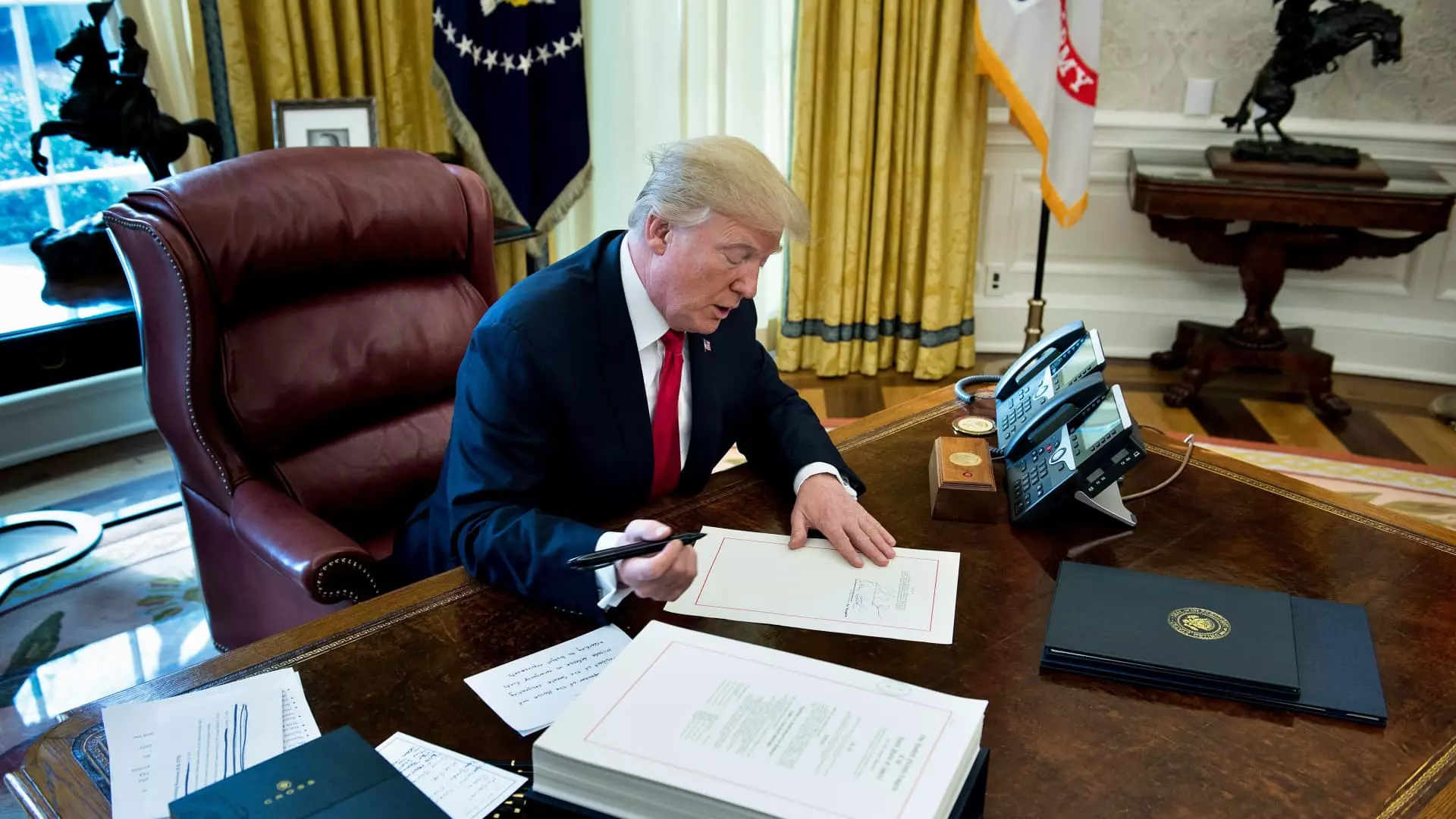As we approach 2025, the looming specter of tax uncertainty could pose significant challenges for both individuals and investors. With Congress gearing up to negotiate the proposed economic agenda of President-elect Donald Trump, historical reference points might provide valuable insights. Specifically, Trump’s 2017 Tax Cuts and Jobs Act (TCJA) not only reshaped the tax landscape but also offers strategic lessons for navigating similar volatile situations today.
Trump’s administration made sweeping reforms through the TCJA, giving rise to a notable reduction in corporate taxes and restructured tax brackets for individuals. Many investors today are presented with a scenario reminiscent of those initial tumultuous days following the enactment of the TCJA. The core of the current uncertainty stems from the impending expiration of significant tax provisions, which, if left unaddressed, could revert to the previous regulatory framework post-2025.
The potential expiration of these tax breaks—lower income tax rates, increased standard deductions, and a higher child tax credit—creates a landscape filled with unease. Just as investors braced for sudden changes in tax legislation in 2017, the next few years could necessitate proactive planning for a potential shift in the tax regime that could impact net incomes markedly.
Proposed Changes and their Implications
While Trump has promised to maintain many of the benefits instituted by the TCJA, uncertainty remains. Among the highlighted proposals are the elimination of taxes on tips, relief from taxation on Social Security benefits for seniors, and the removal of the $10,000 limitation on state and local tax (SALT) deductions. Each of these potential changes carries implications for different demographics and economic classes, suggesting that investors and taxpayers should remain vigilant.
Republicans support many of Trump’s initiatives, but the solidification of these proposals heavily depends on combating budgetary concerns. The intricacies of budget reconciliation—a parliamentary procedure which allows for expedited consideration of certain tax policies—may play a pivotal role in determining what survives the political bargaining table.
Preparation Strategies Amid Uncertainty
In light of possible legislative maneuvering, experts recommend that investors avoid making irreversible tax-related decisions until clarity is achieved post-legislation. Certified Public Accountant Ryan Losi emphasizes adopting a cautious approach. Rather than jumping to conclusions about future tax rates or policies, maintaining a strategy grounded in the current regulatory landscape is critical.
For those with estates exceeding the current exemptions, the suggestion to consult legal counsel about structuring taxable estates comes into play. The potential boost in the basic exclusion amount to $13.99 million for estate tax exemptions in 2025 attracts attention, posing the question of whether to act preemptively or wait for legislative confirmation.
However, if this exemption were to expire, estates could potentially revert to 2017 levels, adjusted for inflation. Therefore, many financial advisors are advocating for clients to secure estate planning documents promptly, preparing for circumstances where the current exemptions might not hold.
Reflecting on the rapid and potentially chaotic rollouts of the TCJA, financial advisors express concern about the element of surprise in any future legislation. As history suggests, the urgency and lack of preparation time when the TCJA was enacted could resurface again. There might indeed be unforeseen changes akin to “Christmas presents” wrought with complexity and confusion, reflective of the last-minute adjustments made by Congress in 2017.
The qualified business income deduction, while beneficial, was also a source of concern due to the complicated calculations involved. Advisors navigated a labyrinth of inquiries as they interpreted newly enacted provisions. This perennial question of what constitutes sound tax policy in an ambiguous climate underscores the pressing necessity for preparedness and adaptability among investors.
Concluding Thoughts
As we stand on the brink of significant tax developments heading into 2025, the forecast remains clouded with uncertainty. While the landscape shaped by Trump’s 2017 tax overhaul provides valuable lessons, the potential for changes beckons a cautious and strategic approach. Investors must remain educated about impending legislation and prepared to adapt their financial strategies accordingly. Embracing the unexpected while leaning into calculated planning can provide a stabilizing force against the tides of fiscal change—an approach essential in navigating the complexity of modern tax dynamics.

